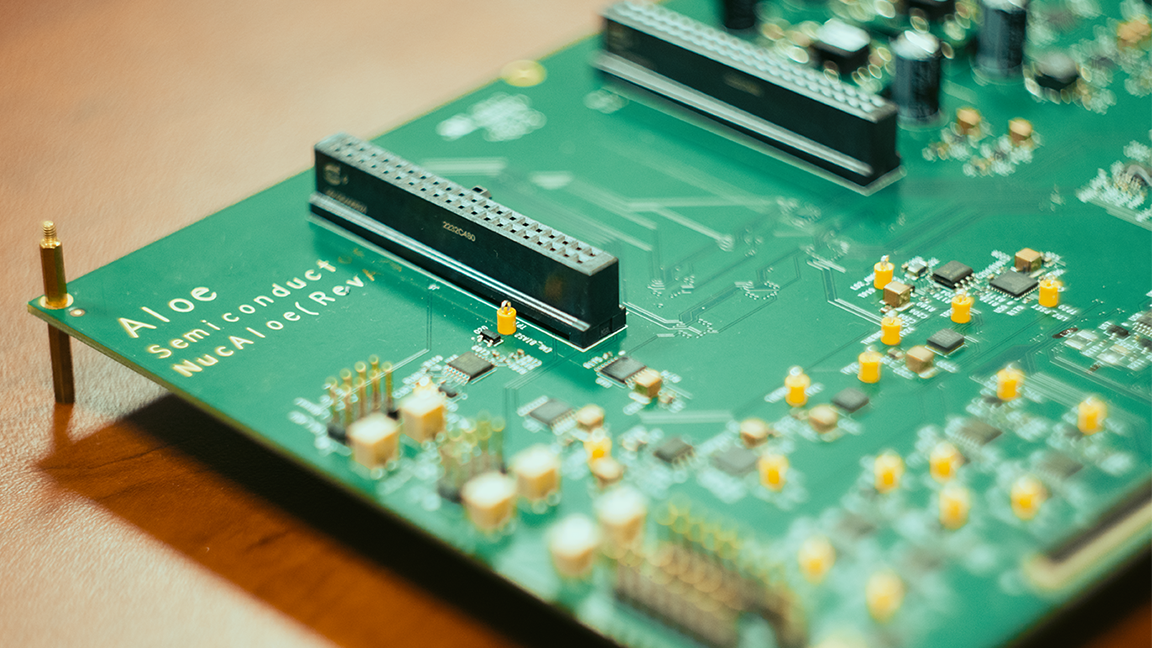Aloe Semiconductor, Inc.’s demonstration will be supported by Broadcom and Eoptolink
A new way to cope with the growing bandwidth demands being placed on data centers and high-performance computing (HPC) operations will be demonstrated for the first time at the ECOC Exhibition in Frankfurt, Germany, next week. Aloe Semiconductor, Inc. (Aloe), a silicon-photonic integrated circuits (PICs) company, will demonstrate the first ever practical use of dual-polarization technology (DP-PAM4) to double the capacity of short-reach fiber links to 425G per lane.
Aloe’s dual-polarization solution saves the cost, size, and power of short-reach networks for data centers and HPC as it can be integrated into existing links. That means networks can be scaled up leveraging currently sampling DSP chips, bypassing the need for new silicon development. The demonstrated pluggable is an Eoptolink OSFP containing a single-chip DP-PAM4 silicon-photonics transmitter and receiver with direct drive from a Broadcom DSP.
“The technology we’ve developed offers a much more efficient way to deliver higher speeds, which we can’t wait to demonstrate to the wider industry at ECOC as an alternative to the photonics status-quo,” said Aloe’s CEO Christopher (Chris) Doerr. “This demonstration will encapsulate our mission to create radically low-cost, low-power and high-performance advanced silicon photonics and electronics solutions for optical communications.”
Aloe’s product, available to module makers, also saves power as 425G rates can be achieved without requiring an increase in symbol rate, laser count, or stronger Forward Error Correction (FEC) and also paves the way to 850G per lane. The demo will be running at Eoptolink stand D60 and requires a reservation to attend. Please contact Chris at cdoerr@aloesemi.com for more details.
“We’re really excited to be a part of what will be a truly pioneering use of dual polarization technology for 400G-per-lane networking”, said Khushrow Machhi, Senior Director of Marketing, Broadcom. “We’ve been pleased to provide our high-performing PAM4 DSP used in the demo, as well as technical support. Broadcom’s success has come from our focus on innovation, collaboration and engineering excellence, and the demonstration that we are helping to facilitate with Aloe is the latest example of our ethos in action at the ECOC Exhibition.”
A key challenge that Aloe’s solution solves is the transition for networks to scale to 425G and then 850G per lane. The industry is currently moving from 56-Gbaud PAM4 to 106-Gbaud PAM4 reach 200G per lane. Aloe’s solution can be used with 106-Gbaud to achieve 425G per lane by applying the concept of dual polarization. This allows for a 3.2T DP-DR8 module without needing to increase the baud rate above 106 Gbaud.
Dual polarization involves transmitting and receiving signals in two distinct polarizations, such as horizontal and vertical. Aloe’s solution borrows the concept of polarization multiplexing from coherent optics and applies it to intensity-modulation direct-detection (IMDD) transceivers to double the lane capacity.
Unlike coherent, however, the demultiplexing is done using silicon photonics and no specialized DSP is required. Aloe’s solution leverages current IEEE rate and FEC compliant PAM4 212.5 Gbps DSPs thus scaling to higher speeds with immediate buildout. Furthermore, there are no additional cost or power implications.
Once the industry moves to 212-Gbaud PAM4, Aloe’s DP technology can be used to achieve 850G per lane. DP-PAM4 offers an alternative to coherent optics to achieve such rates. Coherent technology requires specialized lasers and DSPs and cannot share volume with electrical retimers, making it very difficult to compete financially with PAM4 for short-reach networks which are typically less than 500m in length.
Aloe Semiconductor was founded in 2022 by former Acacia Communications Associate Vice President of Advanced Development Christopher Doerr and is based in New Jersey, USA. Find out more about the company here: https://aloesemi.com/.

